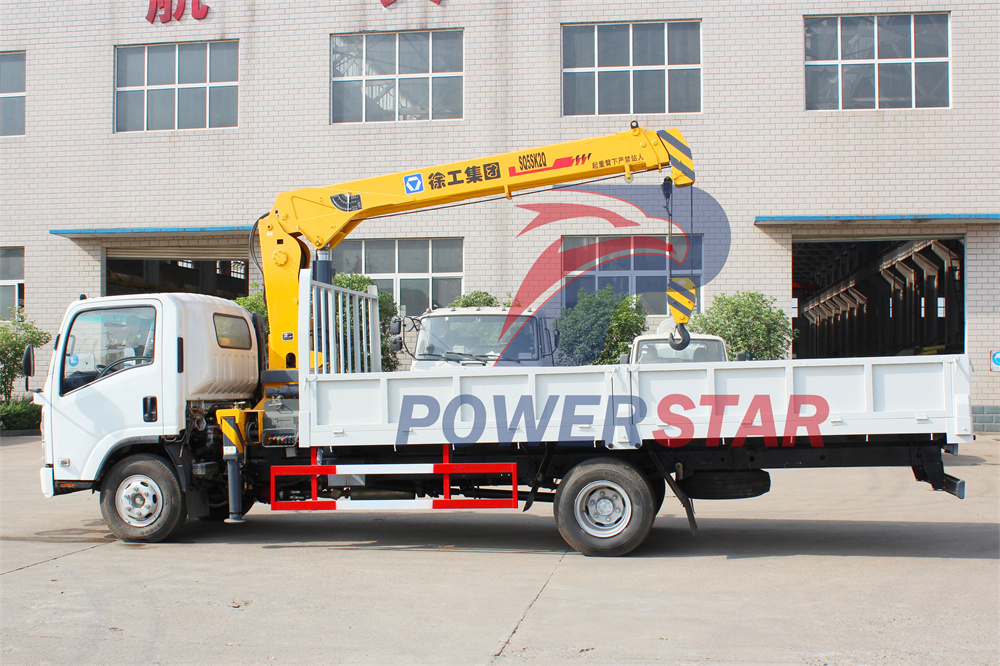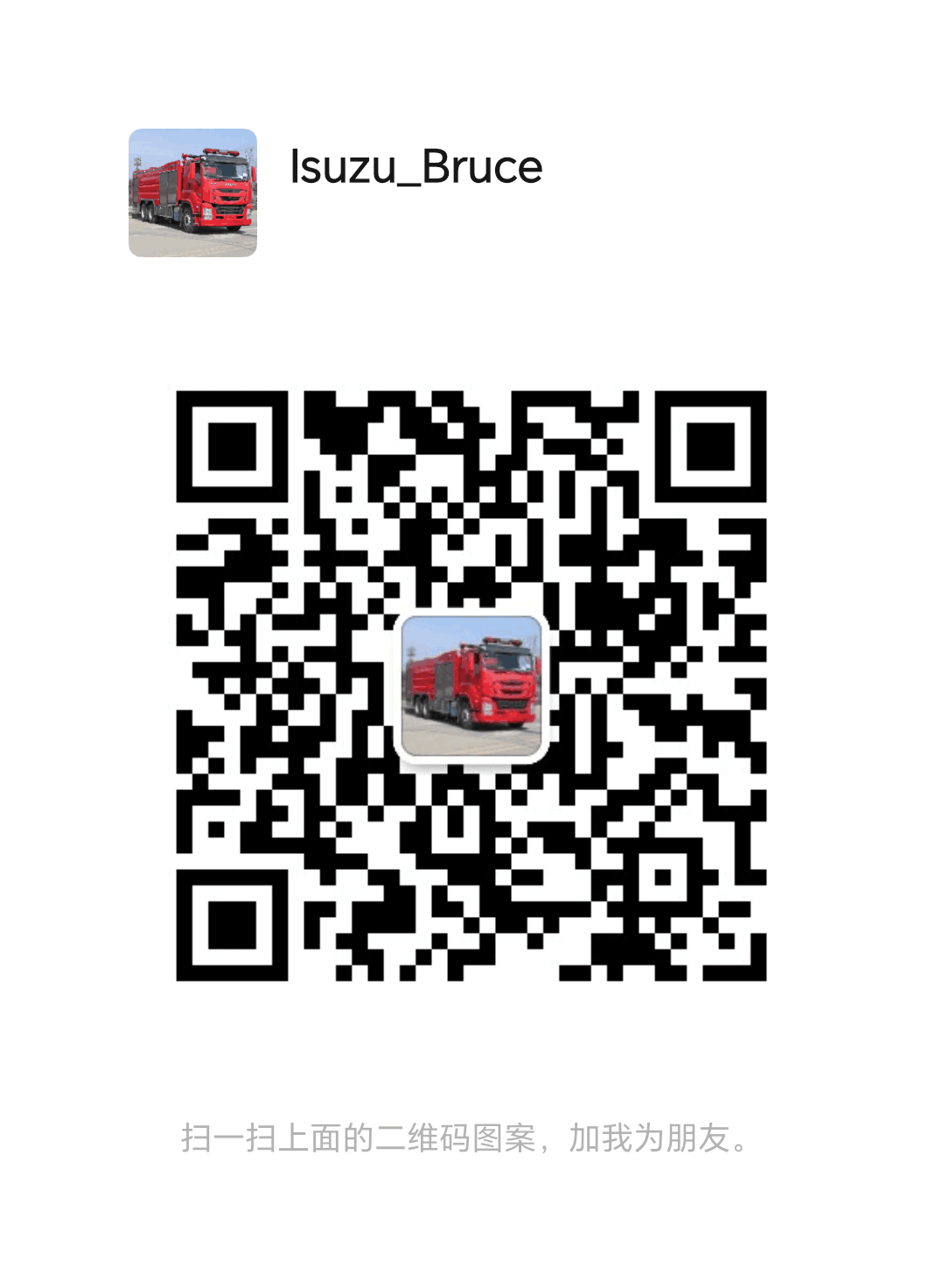


Correct operation of the Isuzu Cargo Crane Truck is crucial because it is directly related to the safety and performance of the vehicle, greatly improving the service life of the truck-mounted crane and reducing the failure rate and maintenance costs. Operators should be familiar with the user manual and safe operating procedures to ensure that staff fully understand the functions and operating requirements of the equipment. It can also maximize the working efficiency and production capacity of the Isuzu Cargo Crane Truck. Operators should master appropriate operating skills and methods to ensure efficient and smooth loading and unloading processes. In addition, correct operation can reduce the risk of accidents and casualties and ensure workplace safety. Operators should remain vigilant at all times and comply with safety regulations and operating requirements.
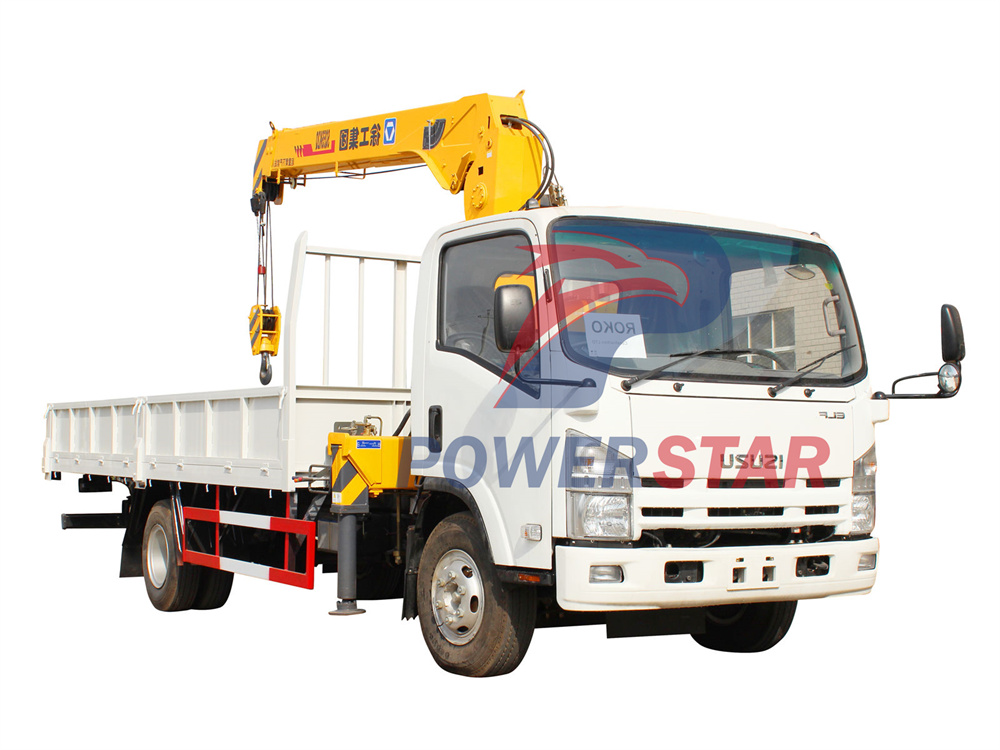
A. Inspection before lifting operations:
1. Check the oil level in the hydraulic tank.
2. Before starting the power take-off device, check whether each operating lever is in the neutral position.
B. General precautions during lifting operations:
1. Carry out lifting operations within the rated lifting range.
2. Concentrate during operation and observe the surrounding situation to avoid accidents.
3. Pay attention to the temperature of the hydraulic oil. When the temperature exceeds 80°C, the lifting operation should be stopped.
4. When the wind speed exceeds 138m/s (level 6 wind), no lifting operations are allowed.
5. When lifting heavy objects, it is strictly prohibited to adjust the outriggers. When adjustment is needed, the heavy objects should be put down and the boom should be retracted.
6. When hoisting, it is strictly forbidden for the two mechanisms to operate at the same time.
7. It is not allowed to lift heavy objects buried underground or frozen on the ground, and it is not allowed to pull heavy objects diagonally.
8. Before starting the operation, use the hand brake to stop the truck.
9. It is strictly forbidden to stand under the boom before operation.
10. The tire pressure meets the regulations, 441kPa for the front wheel and 617kPa for the rear wheel.
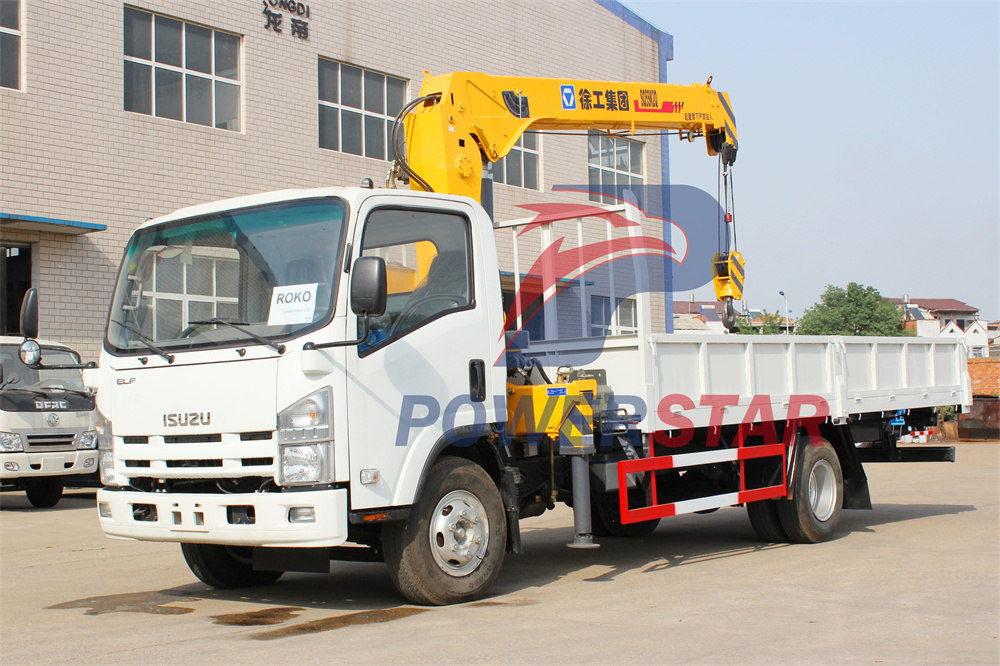
C. Determination of rated load:
1. According to the length of the boom and the pointer position of the amplitude indicator, first read the working amplitude.
2. Read the rated load from the lifting performance table based on the arm length and amplitude.
3. If the arm length or amplitude of the working position is not at the value given in the table, the lifting weight at this time should be based on the smaller of the adjacent values.
4. The parameters on the lifting performance table are only applicable to the lifting operation area. Lifting operations are strictly prohibited in the "prohibited operation area".
D. Outrigger operation:
1. When telescopic and retracting the outriggers, first pull the positioning pin on the fixed outrigger box, manually pull out the movable outrigger to the appropriate position (middle position or maximum position), insert the positioning pin, and make the movable outrigger The beam cannot move any further. Then pull the operating rods of the left and right outrigger cylinders to extend the piston rods of the cylinders and gradually level the plane of the frame.
2. The starting truck should be supported on a hard and flat ground. If necessary, solid blocks (such as wood blocks, iron blocks, etc.) should be placed under the outriggers.
3. After the lifting truck is supported and leveled, the front axle leaf spring shall be completely relaxed.
4. When the truck is moving, the movable outriggers must be stowed and locked.
5. It is strictly prohibited to carry out lifting operations without outriggers. The pins on each outrigger must be pinned properly during operation.
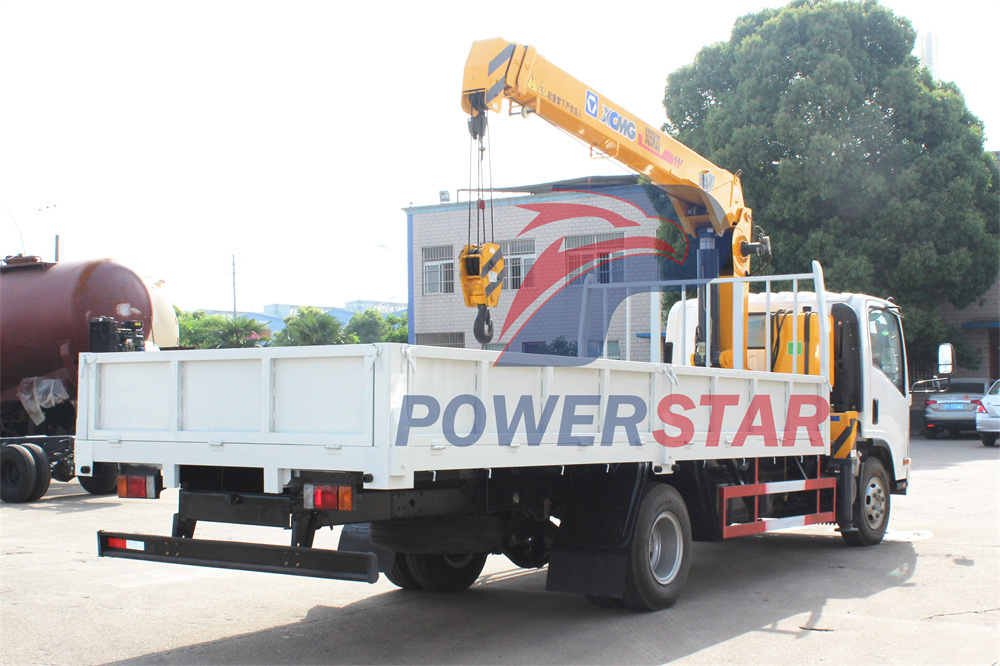
E. Lifting operation:
1. When the broken wires in one strand exceed 10%, the diameter wear reaches 7%, the wire rope is kinked, deformed or severely rusted, the wire rope should be replaced.
2. The operation should be smooth, and it is strictly forbidden to pull the lifting lever sharply to make the lifting and lowering of heavy objects stable.
3. When lifting, slowly lift the heavy object off the ground and wait for a while. If there is no problem, continue lifting. No other operations are allowed until the heavy object has not left the ground.
4. When the hoisted object reaches the specified position, the lifting should be stopped immediately.
5. When the hook rotates due to the hinge of the wire rope, the kink of the wire rope must be completely untied before lifting.
F. Attention should be paid to the following during luffing operation:
1. Do not pull the luffing lever sharply.
2. Do not use luffing operation to lift or drag heavy objects that have not yet left the ground. They must be lifted vertically and no heavy objects can be pulled diagonally.
G. Boom telescopic operation:
1. Before extending the two-section arm, fully lower the hook so that there is a sufficient length of wire rope for the arm extension movement.
2. After lifting heavy objects, it is prohibited to extend or retract the boom.
H.Rotation operation:
1. Do not pull the rotary control lever sharply, and the heavy object should be stable during rotation.
2. When turning, there must not be any obstacles in the turning area.
